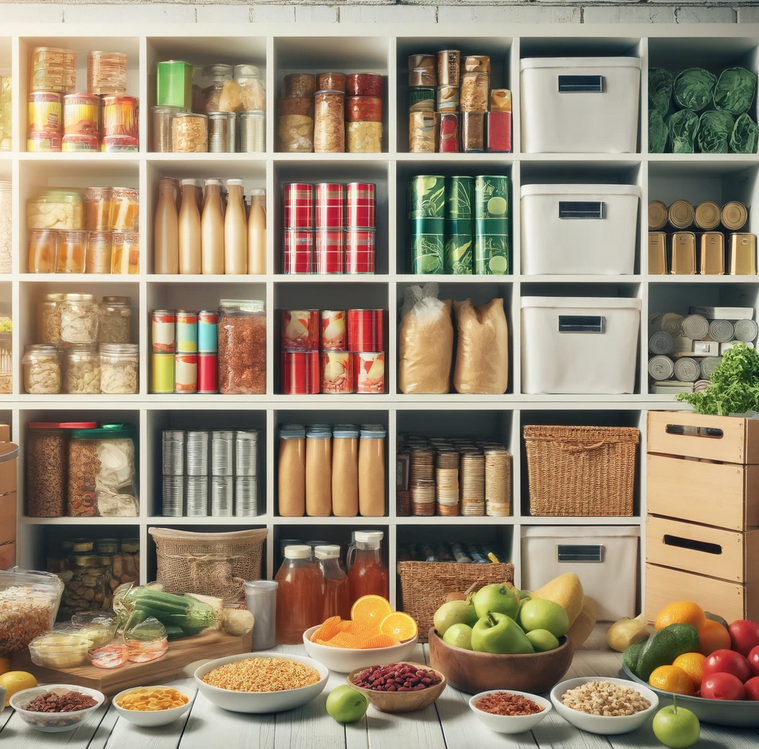Be Ready for the Unexpected Essential Steps to Ensure Your Family's Safety and Survival
Be Prepared for Any Health Emergency
Having a well-stocked medical and first aid kit is essential for handling injuries and health issues during an emergency. This section provides a comprehensive list of the essential items you need, including bandages, antiseptics, medications, and hygiene products. We’ll also discuss the importance of having prescriptions and over-the-counter medications readily available. Properly preparing your medical supplies ensures that you can address health concerns promptly and effectively, keeping your family safe and healthy in any situation.
Essential Items for a Comprehensive First Aid Kit
Bandages and Dressings:
-
- Adhesive Bandages: Various sizes for minor cuts and scrapes.
- Sterile Gauze Pads: Different sizes for covering larger wounds.
- Roller Bandages: For securing gauze pads and providing support.
- Adhesive Tape: To secure bandages and dressings.
- Elastic Bandages: For sprains and strains.
Antiseptics and Wound Care:
-
- Antiseptic Wipes: For cleaning wounds.
- Hydrogen Peroxide or Isopropyl Alcohol: For disinfecting.
- Antibiotic Ointment: To prevent infection in minor cuts and scrapes.
- Hydrocolloid Dressings: For treating blisters and minor burns.
Medications:
-
- Pain Relievers: Ibuprofen, acetaminophen, and aspirin.
- Antihistamines: For allergic reactions.
- Anti-diarrheal Medication: To manage gastrointestinal issues.
- Cold and Flu Medication: To alleviate symptoms.
- Prescription Medications: At least a two-week supply of any essential prescriptions.
Tools and Instruments:
-
- Tweezers: For removing splinters and debris.
- Scissors: For cutting bandages and tape.
- Digital Thermometer: For monitoring fevers.
- Instant Cold Packs: For reducing swelling.
- Sterile Gloves: To prevent infection during treatment.
Hygiene Products:
-
- Hand Sanitizer: To maintain hygiene when soap and water are unavailable.
- Soap: Preferably antibacterial.
- Toothbrushes and Toothpaste: For oral hygiene.
- Sanitary Napkins and Tampons: For feminine hygiene needs.
- Moist Towelettes: For general cleaning.
Emergency Items:
-
- CPR Mask: For safe resuscitation.
- Emergency Blanket: To prevent hypothermia.
- First Aid Manual: For quick reference during emergencies.
- Splinting Materials: To immobilize broken bones or sprains.
Prescription and Over-the-Counter Medications
Prescription Medications:
-
- Ensure you have a minimum of a two-week supply of essential prescription medications.
- Store medications in their original containers with clear labels.
- Include copies of prescriptions and dosage instructions.
Over-the-Counter Medications:
-
- Pain relievers, antacids, laxatives, and cold medications should be part of your kit.
- Check expiration dates regularly and replace as needed.
- Store medications in a cool, dry place to maintain their effectiveness.
Organizing Your Medical Supplies
Storage:
-
- Use a durable, waterproof container to store your first aid supplies.
- Clearly label the container for easy identification.
- Keep the kit in a central, easily accessible location known to all family members.
Maintenance:
-
- Regularly check the contents of your first aid kit to ensure nothing is missing or expired.
- Restock any used or expired items immediately.
- Review the first aid manual periodically to stay familiar with emergency procedures.
Special Considerations
Medical Conditions:
-
- Consider the specific medical needs of each family member, such as asthma, diabetes, or severe allergies.
- Include necessary medical equipment like inhalers, glucose monitors, and EpiPens.
Children and Infants:
-
- Include pediatric versions of medications and supplies.
- Ensure the first aid kit includes items like baby thermometers, diaper rash cream, and electrolyte solutions.
Elderly Family Members:
-
- Consider the specific needs of elderly family members, such as mobility aids, hearing aids, and extra eyeglasses.
By carefully preparing and maintaining a comprehensive medical and first aid kit, you can ensure that your family is equipped to handle health emergencies promptly and effectively. This preparation provides peace of mind, knowing that you can address a wide range of health concerns and keep your loved ones safe and healthy during any crisis.





Black Swan events are highly unpredictable and rare events that can have severe and widespread impacts. Here are some examples of black swan events that could cause food shortages:
Each of these events, while unlikely on their own, represents a potential threat that could lead to significant food shortages if they were to occur. Preparing for such events involves building resilient food systems, maintaining emergency food supplies, and ensuring robust infrastructure and response plans

Natural Disasters
Severe Weather Events:
Hurricanes and Typhoons: Can destroy crops, disrupt transportation, and damage infrastructure.
Floods: Can inundate farmlands, contaminate water supplies, and lead to loss of livestock.
Droughts: Prolonged periods of insufficient rainfall can devastate crop yields and reduce water supplies for irrigation.
Earthquakes:
Can damage agricultural infrastructure, disrupt transportation networks, and cause soil liquefaction in farming areas.
Volcanic Eruptions:
Can cover large areas of farmland with ash, disrupt air travel, and affect climate patterns, leading to lower crop yields.
Tsunamis:
Can flood coastal agricultural areas, destroy crops, and contaminate freshwater sources with saltwater.

Environmental and Ecological Events
Pandemics Affecting Humans:
Similar to COVID-19, can disrupt food production, supply chains, and labor availability in agriculture.
Plant Diseases and Pests:
Outbreaks of plant diseases (e.g., wheat rust) or pests (e.g., locust swarms) can devastate crops over large areas.
Animal Diseases:
Epidemics like avian influenza or African swine fever can drastically reduce livestock populations.

Geopolitical and Economic Events
Wars and Conflicts:
Can disrupt agricultural production, damage infrastructure, and displace farming communities.
Trade Disruptions:
Trade wars, sanctions, or blockades can restrict the flow of food commodities between countries.
Economic Collapses:
Severe economic downturns or financial crises can reduce the ability of countries to import food and affect agricultural investments.

Technological and Cyber Events
Cyberattacks:
Targeting critical infrastructure such as power grids, transportation networks, or food supply chains can cause significant disruptions.
Biotechnology Failures:
Unintended consequences of genetically modified organisms (GMOs) or other agricultural technologies can lead to crop failures or health issues.

Climate Change-Related Events
Abrupt Climate Shifts:
Sudden and severe changes in climate patterns, such as an unexpected shift in the jet stream, can affect growing seasons and crop viability.
Oceanic Changes:
Rapid changes in ocean temperatures or currents can affect global weather patterns and fish populations, leading to food shortages.

Societal and Infrastructure Events
Abrupt Climate Shifts:
Sudden and severe changes in climate patterns, such as an unexpected shift in the jet stream, can affect growing seasons and crop viability.
Oceanic Changes:
Rapid changes in ocean temperatures or currents can affect global weather patterns and fish populations, leading to food shortages.

Other Unpredictable Events
Asteroid Impact:
Though extremely rare, an asteroid impact could cause widespread devastation and climate disruptions.
Solar Flares and EMPs:
Severe solar flares or electromagnetic pulses (EMPs) could disrupt electrical grids and communication systems, affecting food production and distribution.

